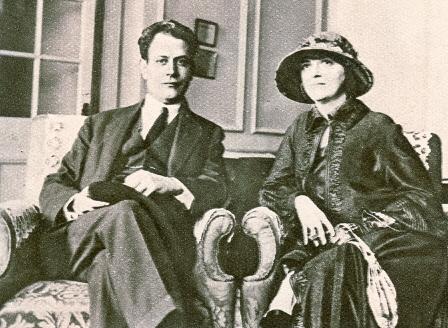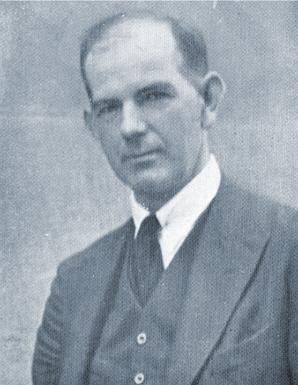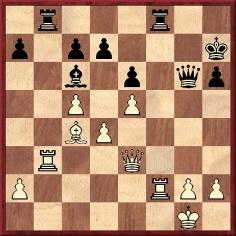
Edward Winter

Capablanca and his wife Gloria, Illustrated London News, 26 August 1922, page 327
From Steve Giddins (Chatham, England):
‘The London, 1922 tournament book by Maróczy gives the early moves of the game Morrison-Capablanca as follows:
1 d4 Nf6 2 Nf3 e6 3 e3 b6 4 Bd3 Bb7 5 O-O Be7 6 b3 O-O 7 Bb2 Ne4 8 c4 f5 9 Nc3 Qe8 10 Qc2 Nxc3 11 Bxc3 Qh5 12 Qe2 Na6 13 c5 Nb8 14 b4 Bf6 15 Rac1 Nc6 16 e4 Ne7 17 e5 Nd5 18 Bd2 Be7 19 Ne1 Qf7 20 f4 Rab8 21 Bc4 bxc5 22 bxc5 h6 23 Nc2 g5 24 Rb1 gxf4 25 Rb3 Bc6 26 Bxf4
26…Nxf4 27 Rxf4 Kh7 28 Ne3 Bg5, with Black going on to win.
In his notes, Maróczy points out that White could have won a pawn for nothing by 28 Rxf5. I was immediately sceptical of the suggestion that Capablanca made such a crass blunder as 27...Kh7, and so I checked other sources. The Capablanca volume in Wildhagen’s Weltgeschichte des Schachs series gives the above move-order, and its small booklet of annotations also points out the alleged White win. However, the 1959 Russian book on Capablanca by Panov (page 131) gives a different move-order, 26...Kh7 27 Ne3 Nxf4 28 Rxf4 Bg5, etc., which of course precludes the resource pointed out by Maróczy. I am pleased to be able to report that this does indeed appear to be the actual move-order. This is confirmed by the report in The Times on 5 August 1922. The text of Capablanca’s report was reproduced on page 142 of your own book on Capablanca, but in giving the full game-score that day The Times had the move-order quoted by Panov. I therefore feel fairly sure that the tournament book is incorrect and that Morrison did not miss a win by 28 Rxf5.’
We thank Mr Giddins for raising a most interesting matter which, as will be shown, is far from straightforward. From the above diagram there are two versions of how the game went:
Version 1 (Burn’s column in The Field, 19 August 1922, page 271, Maróczy’s tournament book, published in summer 1923, and most subsequent sources): 26…Nxf4 27 Rxf4 Kh7 28 Ne3 Bg5.
Version 2 (The Times, 5 August 1922, page 14, and most other 1922 sources): 26…Kh7 27 Ne3 Nxf4 28 Rxf4 Bg5.
Many additional complications arise. For instance, Burn’s general report on page 236 of The Field of 12 August 1922 stated, ‘The Canadian outplayed his opponent in the middlegame, but on the 27th move [emphasis added] he missed a continuation which would probably have given him a won game’, yet the following week it was 28 Ne3 that Burn faulted: ‘White here overlooked that he could have gained a pawn by R takes P, with probably a winning position.’ Moreover, Burn’s annotations were also given on page 135 of the September-October 1922 American Chess Bulletin, even though the game-score used there was Version 2, which meant that Burn’s above-quoted remark at move 28 made no sense.
Then there was Znosko-Borovsky, a participant in the London tournament. In La Stratégie (August 1922, pages 189-191) he used Version 2, but in a later article about Capablanca’s mistakes (Kagans Neueste Schachnachrichten, January-March 1926, page 152) he switched to Version 1. By then the game was gaining notoriety, and in writing the introduction to the New York, 1927 tournament book Alekhine felt able, on page 15, to refer to it as an established example of a major oversight by the Cuban, without offering any particulars.

John Stuart Morrison
On the analytical front, concerning Version 1 Reinfeld (The Immortal Games of Capablanca) called 27…Kh7 a serious mistake and said that 27…Bg5 gave a winning attack. The Euwe/Prins book on Capablanca proposed 28 Rxf5 Qg7 29 Rxb8 Rxb8 30 Rf1 Rg8. See also page 132 of Capablanca’s Best Chess Endings by Irving Chernev (whose analysis was disputed by Richard Moody on page 32 of the December 1990 Chess Life).
As regards Version 2, in La Stratégie it was considered that White should have retained the bishop pair through 27 Bd2. On page 201 of the December 1922 Magyar Sakkvilág and page 275 of Bachmann’s Schachjahrbuch 1922 the possibility of 27 Bxh6 was given two exclamation marks, since 27…Kxh6 28 Rh3+ leads to perpetual check. In the June 1924 Wiener Schachzeitung (page 166) N. Grekov recommended 27 Bxd5, followed by 28 Rh3.
So, was it Version 1 or Version 2 that was played, and what are the analytical merits of each line? Only one thing seems clear to us at this stage: Capablanca went on to win in magnificent style after 29 Rxf5 Bxe3+ 30 Qxe3 Qg6 31 Rf2

(2442)
Two sequences from the game were given by Tartakower on pages 60-62 of Die Hypermoderne Schachpartie (Vienna, 1924).
From The Times, 5 August 1922, page 14:


To the Chess Notes main page.
To the Archives for other feature articles.
Copyright: Edward Winter. All rights reserved.